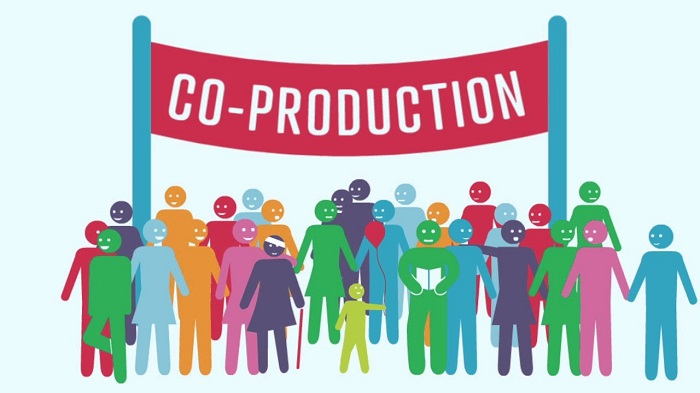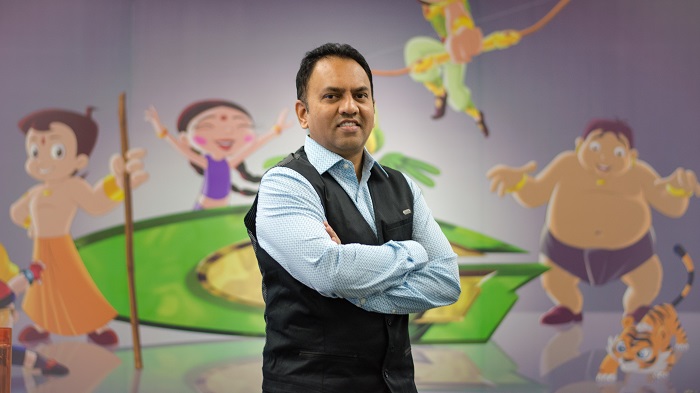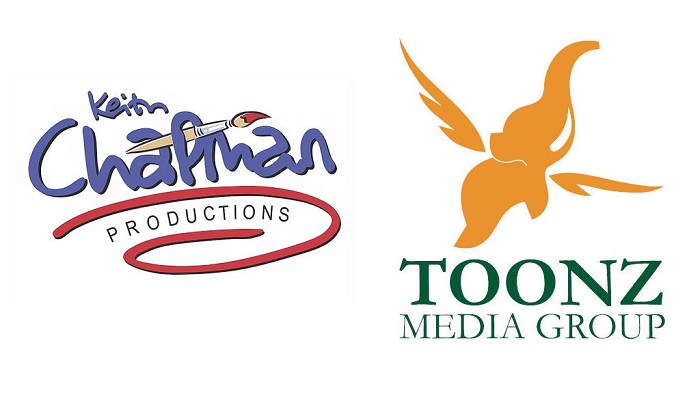The Indian Animation and VFX industry has grown by leaps and bounds over the past few years, opening new opportunities and avenues. Of all, co-production is indeed a lucrative opening for the sector and is expected to be the way ahead in the near future.
India has always remained a favourite in terms of service or commissioned work for foreign countries, due to skilled labour and value for money. For the last few years, the country has seen multiple co-production deals and the volume is only going to increase as experts opine that it’s only to get bigger and better.

Speaking at FICCI’s annual summit (this time virtually) – ‘Export of Indian Film Services to the World: Servicing the World Entertainment’, Green Gold Animation founder, CEO and MD Rajiv Chilaka commented, “We are best placed in the scenario in terms of everything. There is a value for money and maximum people who are coming to India for co-productions, are pleased for the quality versus the cost they are paying. The most important thing is that as Indians, we are very agile and quick in terms of learning new things and adapting to newer technologies, new methods, new software, rendering tools and others. We are very well placed as we have upgraded ourselves. During the lockdown the animation industry was still kicking and producing quality animated content right from what is commissioned by the broadcasters to independent projects and co-production projects as well. We have good opportunities to collaborate with other countries and that has a very bright future for us.”
The Government of India is also quite actively looking at more opportunities and providing benefits and facilities for the AVGC community. In fact, authorities are working on treaties and incentives. India already has co-production treaties with over 15 countries and are open to more deals specific to the AVGC sector. They are also ready to identify more countries with whom India can have co-production deals in the near future and have asked for a complete list from the industry veterans to work ahead on that.

Government of India Ministry of Information joint secretary (Films) and NFDC MD TCA Kalyani mentioned in the webinar, “Co-production is indeed the way ahead. From our side, the incentives are available for shooting in India and also for co-productions. The treaty also applies to animated and VFX projects. We are also open to initiate dialogues with other potential partner countries for having co-production projects with India. Our co-production treaties in this case will be very helpful and useful.”
Government of India Ministry of Information additional secretary and Broadcasting Atul Kumar Tiwari added on the similar line, “Even during COVID, the animation industry was working full fledged and there is so much potential going forward. Collaborations are happening and more are possible. We will do whatever possible for us for a comparative advantage so that the industry is benefited and grows at the end of the day. The current trend and motto for the community is ‘Make in India, Made for the world.’ Our incentive scheme is ready, we’re already working on them and once it’s finalised, we will announce it soon officially, including all the state policies and others.”

Punnaryug Artvision founder and FICCI AVGC (Animation, VFX, Gaming and Comics) Forum chairman Dr. Ashish Kulkarni also gave a broad and informative insight about the recent co-production scenario in the country and what to expect in the near future.
Said he, “India has a brighter future in terms of co-productions. In this space, we have a large amount of productions happening between Asian countries itself. South Korea is very active and there are a large number of Indian studios that are traveling there and South Koreans coming here. We also have a lot of Japanese productions happening, as well as a lot of co-production projects which have originated in Taiwan. Some deals have taken place in Sri Lanka, Israel, Malaysia, some new Latin American markets- like Brazil, Argentina, Caribbean, Trinidad and Tobago, who have very progressive policies on animation. We have also recently initiated one production with Bhutan. We definitely can get into a new paradigm of co-productions with things being in our favour.”
Earlier, Toonz Media Group, Cosmos-Maya, Assemblage Entertainment, DQ Entertainment, philmCGI and other well known studios have co-produced major animated projects which have been very successful. They are constantly exploring more avenues and aspects to take this legacy ahead.
Kulkarni pointed out that with co-production deals and facilities, the production cost of a project is taken care of by almost 40 to 50 per cent and those productions become much bigger and better for both partners. The challenge that Indian studios continue to face is how to sell that content in the Indian context, because most of the productions are not really happening in India but come as service work.
“Projects that come to us are maximum commissioned works and those are bought with all the rights, because in services business you don’t retain rights, if a company is selling the content completely to the broadcaster or the OTT platform. So we need to really see a balance is happening and that can come through co-productions. We can try to look at partially selling in India and partially selling in multiple other countries. And if all producers can actually access the co-production projects and they are able to retain certain rights with them, it is going to be a welcome thing for the industry,” exclaimed he.
He also noted that India can go a long way because of the cost arbitrage and experience, which can win major projects out of the world and having a good experience is a big advantage for India. Also having good relations with other countries and potential partners is a key factor in inking a co-production deal.

India is now at a launching pad and the latest trends over the past couple of years clearly shows that Indian Studios want to move beyond only service work and are welcome to do independent projects and co-production with some bit of ownership of the IP.
Kulkarni further stated, “Earlier it was only about the post-production work happening in India in terms of co-production projects. But now over the period of last five-six years, India has more original content, and can now play a much bigger role right from conceptualising, to ideating, visualisation of the story, plot outline, creating sound, music, mixing and more. We can be a very big winner in music too, as India has a very rich culture and history of music – one of the largest and strongest ecosystems due to a strong composition background as well as culture.”
The mechanism for smooth co-production deals is getting worked out very actively at places like NFDC with single window clearance and facilitation on co-production projects. According to Kulkarni, when the mechanism is on, India can position itself strongly than before. He’s also looking at strong markets/clusters in India itself like Mumbai, Pune, Chennai, Hyderabad, Bengaluru, Trivandrum, Kolkata and even the NCR regions which are thriving in terms of the AVGC ecosystem, infrastructure and frameworks. He is very hopeful of a possible partnership happening between these clusters as well. In the near future they would be co-producing projects withing themselves as well as with many foreign studios.

Every region or state has different cultures and now they also have different policies as well. The governing body is working with some of the states who don’t have a policy, to have a policy. There are certain states also who are willing to put funds and are looking at co-production facilities which is surely a welcome sign for the community. This will put India in a position to have enough funds and if there’s collaboration as an industry, the AVGC industry can take care of many challenging things.
“I’m very happy to see that the AVG (animation, VFX, Gaming) sectors are working in coordination and it’s the perfect time to implement co-production deals with treaties as well as without the treaties. The State and the Nation can also have their respective plays in this case. We need a cluster of studios to come together and work on it, which wasn’t easy earlier. I remember when I brought Barnyard to India, at one point of time there were 140 shows to be done and I personally took them to about seven studios, and five of them signed up. They then work together on it to deliver Barnyard to Nickelodeon in the US.
That’s the kind of thing I am looking at the new future in India in terms of collaborative models. So moving forward, I think we need to really concentrate on co-productions and opening of new partner countries that Indian studios have now started traveling and connecting with other studios as well as producing their own shows. So India as a destination for co-production, has a very very bright future and a promising way ahead,” concluded Kulkarni.

These are indeed tough times but Animation and Indian AVGC industry has found out a way around it, and with the instances and expectation, the industry is only going to soar higher and co-production is definitely going to be a major stepping stone for it.

